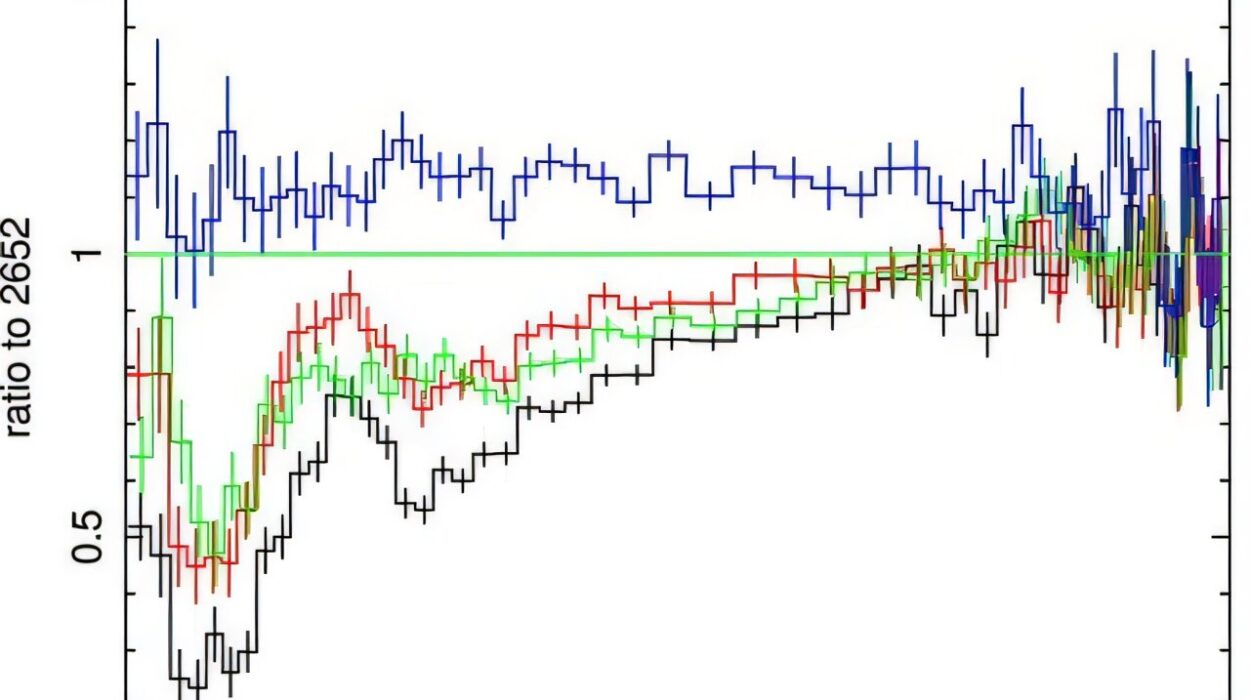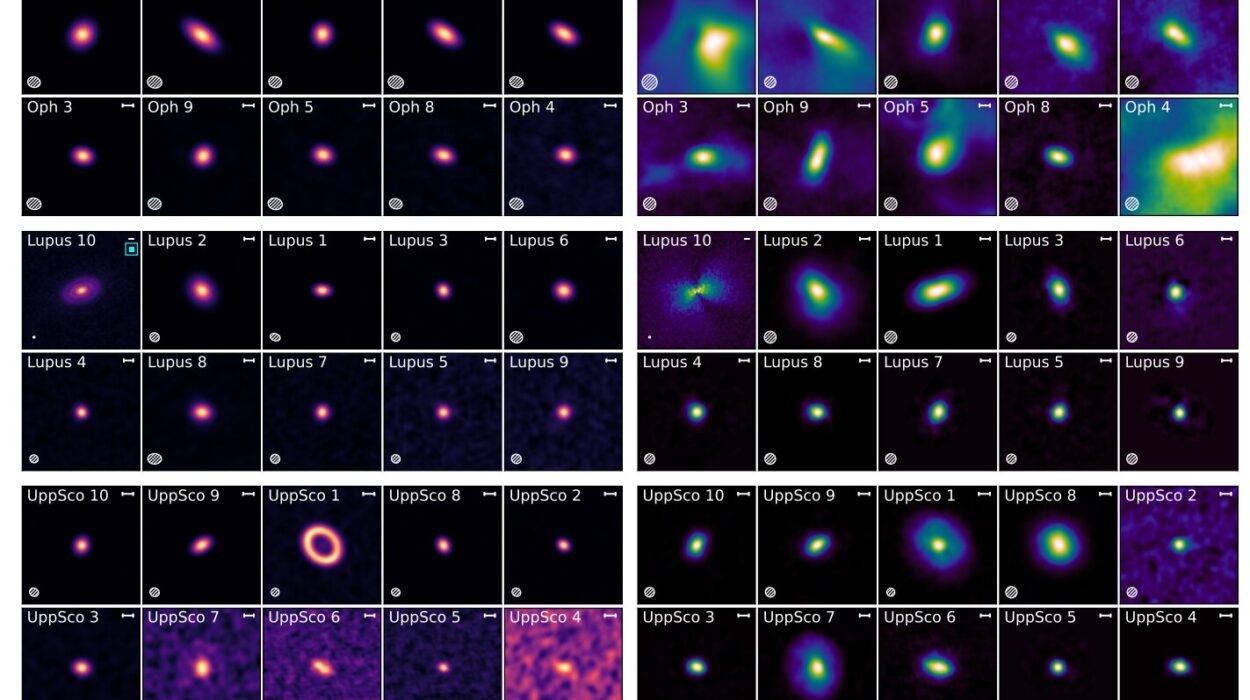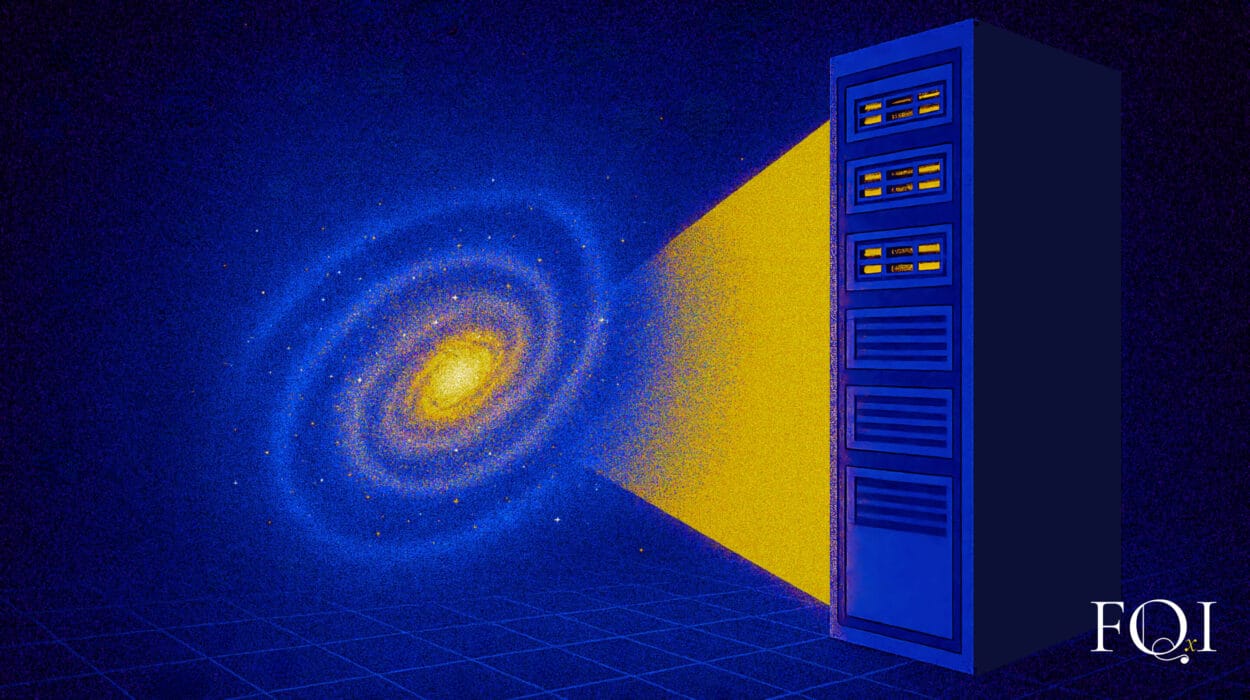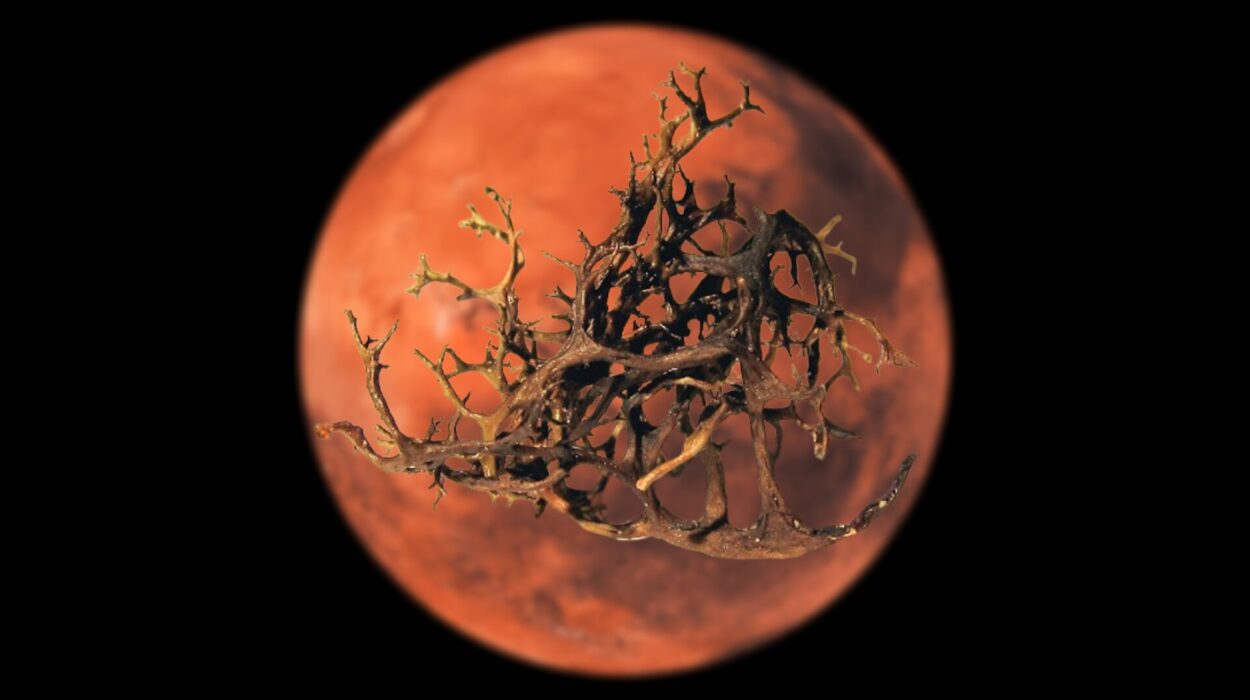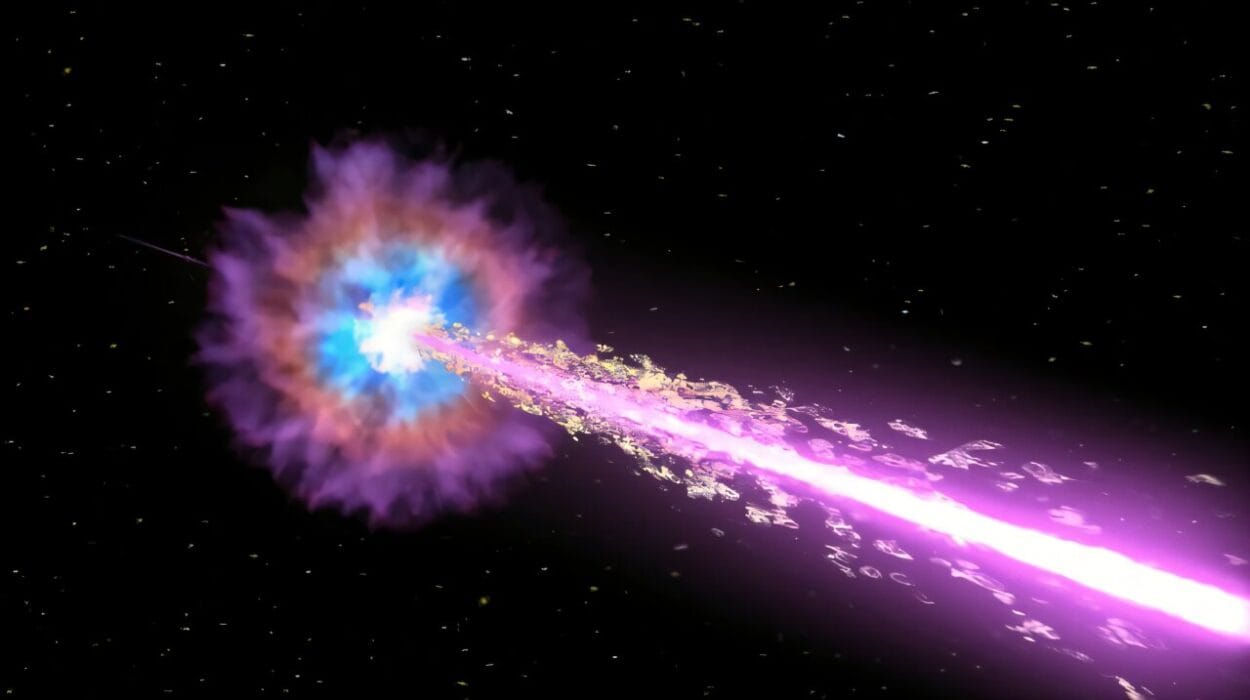Jupiter, the colossal king of our solar system, has always held secrets that challenge our understanding of planetary science. Now, thanks to the extraordinary capabilities of the NASA/ESA/CSA James Webb Space Telescope (JWST), a breathtaking new chapter has unfolded in the study of Jupiter’s auroras—those mesmerizing light displays that flicker near the planet’s magnetic poles. These auroras, hundreds of times more powerful and luminous than Earth’s northern and southern lights, are offering astronomers a deeper glimpse into the gas giant’s magnetic realm.
On Christmas Day 2023, a team of scientists led by Jonathan Nichols at the University of Leicester captured revolutionary near-infrared images using JWST’s Near-InfraRed Camera (NIRCam). The result? A cosmic light show that was far more dynamic, powerful, and mysterious than anyone had expected.
What Causes Jupiter’s Auroras?
Auroras, whether on Earth or Jupiter, originate from interactions between charged particles and a planet’s magnetic field and atmosphere. On Earth, these are typically caused by solar storms—bursts of energetic particles hurled from the Sun during coronal mass ejections. These particles stream along Earth’s magnetic field lines, collide with atmospheric gases, and emit the colorful glow of auroras.
But Jupiter’s auroras are on another scale entirely.
Jupiter boasts the most powerful magnetic field of any planet in our solar system, stretching millions of kilometers into space. Not only does it capture particles from the solar wind, but it also siphons charged particles from its volcanic moon Io. Io, the most volcanically active body in the solar system, spews sulfur, oxygen, and other ions into space. These particles become trapped in Jupiter’s magnetic field, adding a secondary and uniquely Jovian fuel source for auroral activity.
When these particles spiral down magnetic field lines into Jupiter’s atmosphere, they crash into gas molecules with immense energy, igniting luminous emissions that light up the poles with an otherworldly brilliance.
Webb’s Remarkable Observation Capabilities
What makes JWST’s recent observations so groundbreaking is not just the clarity but the cadence of its imaging. Most telescopes, including those observing in infrared, typically capture still or slowly-changing features. But JWST’s sensitivity allowed astronomers to significantly increase the “shutter speed”—capturing changes in the aurora on a second-by-second basis.
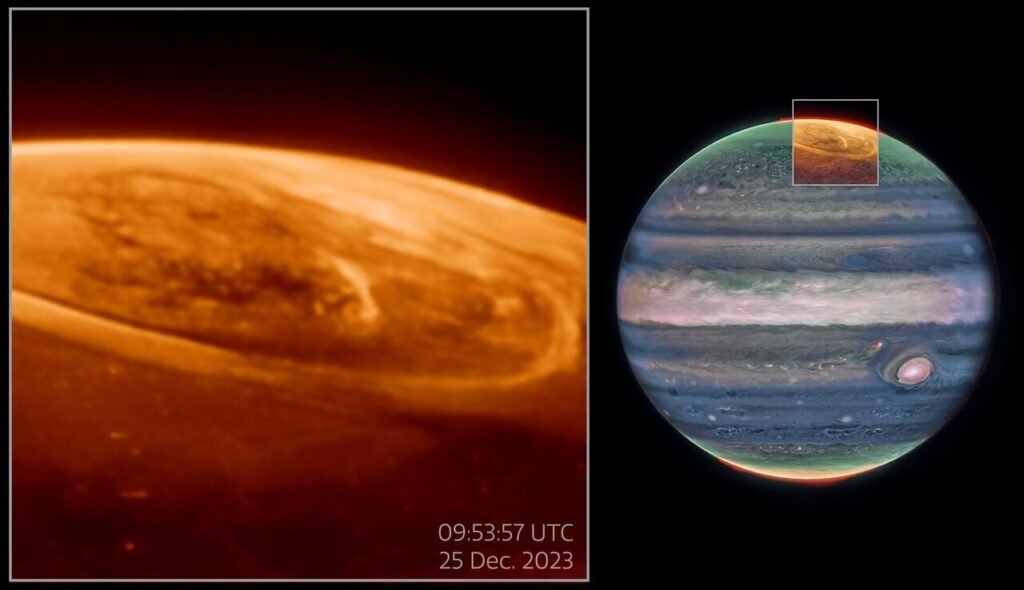
“We wanted to see how quickly the auroras change, expecting it to fade in and out ponderously, perhaps over a quarter of an hour or so,” said Nichols. “Instead, we observed the whole auroral region fizzing and popping with light, sometimes varying by the second. It just blew me away.”
This remarkable variability centered around the emission from H3+, a charged molecule of three hydrogen atoms. This ion is an important tracer of energy dynamics in Jupiter’s upper atmosphere, and it glows brightly in infrared wavelengths when excited.
The discovery that H3+ emissions fluctuate so quickly and intensely is revolutionizing what scientists know about Jupiter’s atmospheric heating and energy flow.
A Cosmic Mystery in the Data
Even more intriguing than the aurora’s explosive behavior is a bizarre mismatch found between JWST’s infrared data and ultraviolet images taken simultaneously by the Hubble Space Telescope. Typically, ultraviolet and infrared emissions are correlated because they arise from similar particle interactions. But one of the brightest regions observed by JWST had no counterpart in Hubble’s data.
“In order to cause the combination of brightness seen by both Webb and Hubble, we need to have an apparently impossible combination of high quantities of very-low-energy particles hitting the atmosphere—like a tempest of drizzle!” explained Nichols. “We still don’t understand how this happens.”
This strange phenomenon has puzzled the researchers. The best theories suggest an unusual mix of particle energies, possibly involving complex interactions within Jupiter’s magnetosphere, but no existing model can fully explain it. This presents not only a scientific puzzle but a golden opportunity: a chance to rewrite the textbooks on planetary auroras and magnetospheres.
The Bigger Picture: Unlocking Jupiter’s Atmospheric Secrets
The implications of JWST’s observations extend far beyond visual spectacle. Understanding how Jupiter’s upper atmosphere is energized and how it radiates that energy away is essential to piecing together the planet’s overall atmospheric dynamics.
By comparing auroral brightness patterns, particle energy distributions, and magnetic field structures, scientists can better understand how heat is transferred through Jupiter’s upper layers. This helps explain how its weather systems are powered, how its magnetic field evolves, and how external influences (like Io’s volcanic emissions) shape the gas giant’s environment.
Jupiter’s immense radiation belts and magnetic field also serve as a natural laboratory for understanding exoplanets. Many of the thousands of planets discovered orbiting other stars are gas giants similar to Jupiter, some even more massive and magnetically active. By decoding Jupiter’s behavior, astronomers can make better predictions about these distant worlds.
Synergy with Future Missions: JUICE and Juno
The JWST findings arrive at a pivotal time. NASA’s Juno spacecraft is already orbiting Jupiter, measuring its magnetic field, auroras, and internal structure with unprecedented precision. Meanwhile, the European Space Agency’s JUICE mission (Jupiter Icy Moons Explorer) is on its way, slated to explore the planet and its largest moons—Ganymede, Callisto, and Europa.
These moons, especially Europa and Ganymede, are believed to harbor subsurface oceans, making them prime candidates in the search for extraterrestrial life. Understanding how Jupiter’s powerful magnetic field and auroras interact with these moons is key to gauging the radiation environment they face and how it may affect their potential habitability.
JUICE will carry seven scientific instruments dedicated to studying Jupiter’s environment, including two imagers capable of capturing its auroras. These instruments, together with ongoing JWST observations and Juno’s data, will form a comprehensive network of space-based eyes watching the gas giant’s every move.
The Broader Cosmic Perspective
What makes this discovery so profound isn’t just the spectacle—it’s the method. JWST has shown us that even the most familiar planets in our solar system still harbor mysteries that can defy expectations. Jupiter’s auroras, long admired from afar, are now becoming living laboratories for understanding planetary magnetism, atmospheric physics, and cosmic energy flow.
The idea that something as beautiful as dancing lights could unlock secrets about a planet’s very heart is deeply poetic. With every flicker and flare, Jupiter tells a new story—one of violent particle storms, invisible magnetic tides, and the enduring quest to understand the universe’s complexity.
And the story is far from over.
Conclusion: A New Era of Planetary Exploration
With each new observation, JWST reaffirms its role as the crown jewel of space science. Its ability to peer through cosmic veils with infrared vision is unlocking secrets from the edge of the universe—and right here in our own solar neighborhood. The shimmering auroras on Jupiter are more than just lights in the sky. They are the radiant fingerprints of forces too vast to witness with the naked eye, but too powerful to ignore.
The partnership between JWST, Hubble, Juno, and JUICE is ushering in a golden age of planetary science—one where collaboration, curiosity, and cutting-edge technology are rewriting our understanding of what lies in the darkness beyond.
Reference: J. D. Nichols et al, Dynamic infrared aurora on Jupiter, Nature Communications (2025). DOI: 10.1038/s41467-025-58984-z

